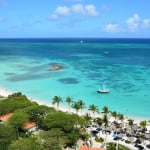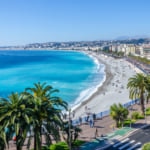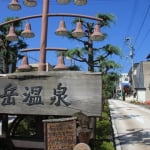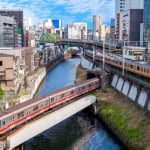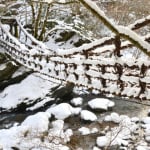Name: Seki Traditional Swordsmith Museum
Address: 9-1 Minami Kasuga-cho, Seki City, Gifu Prefecture
Official Website: https://www.city.seki.lg.jp/kanko/0000001558.html
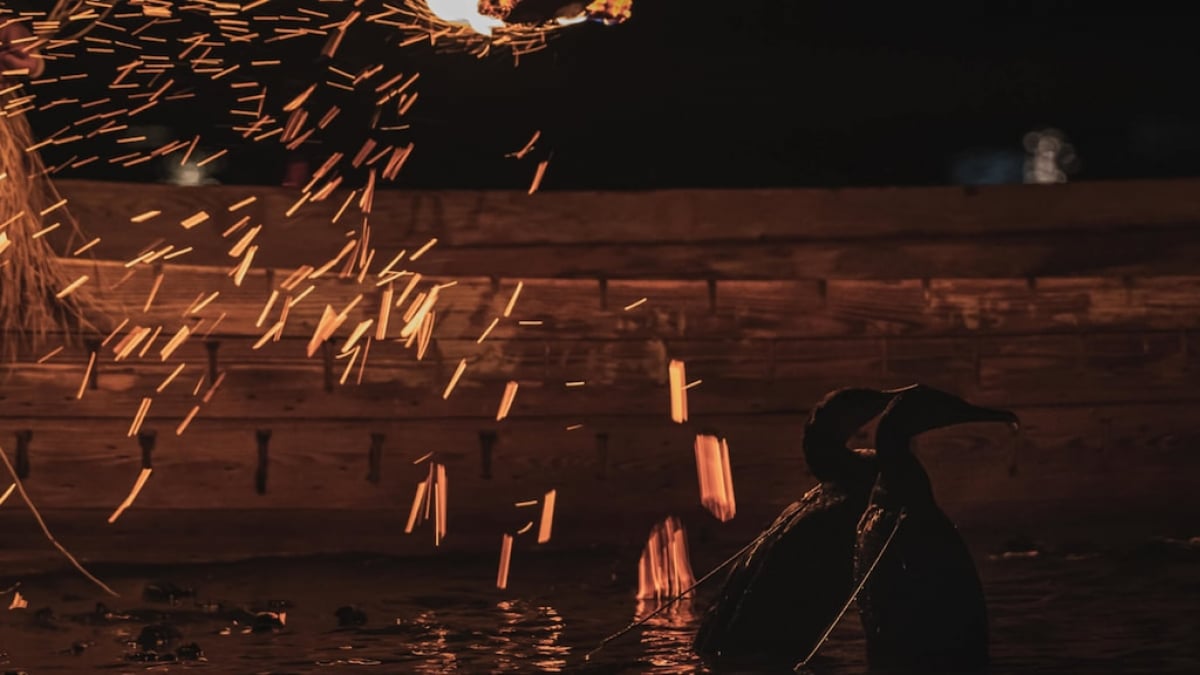
15 Recommended Tourist Spots in Seki City, Gifu Prefecture — The Town of Blades and Cormorant Fishing!
Seki City is located in the central part of Gifu Prefecture, next to Gifu City. It is home to Japan's population center of gravity, making it the central area of the entire country. The city's population is about 90,000 (estimated as of June 2016). Surrounded by abundant nature, it boasts first-class rivers such as the Nagara River, Mugi River, and Itadori River, as well as mountains like Takinami-yama and Samon-dake.
Traditional skills are still alive in Seki City, including the cormorant fishing on the Nagara River and the swordsmithing techniques that have a 700-year history. This time, we will introduce tourist spots that capture the charm of Seki City. There are many relaxing places where you can enjoy your trip peacefully. We hope you find this helpful!
table of contents
[x] close
15 Recommended Tourist Spots in Seki City, Gifu Prefecture — The Town of Blades and Cormorant Fishing!
- 1. See the Beautiful Blades of Seki Up Close - Seki Traditional Swordsmith Museum
- 2. Get High-Quality Blades from Seki City! - Gifu Cutlery Hall
- 3. Feel the Life’s Work of Enku at the Seki Enku Museum
- 4. The Shrine of the Blade God - Seki Kasuga Shrine
- 5. Get Up Close with the Cormorant Fishing at Unoie Adachi — Enjoy Delicious Sweetfish Too!
- 6. Perfect for Families – Furusato Farm Mino Seki
- 7. Stylish Japanese Modern Inn – Hidden Hot Spring Inn Yumoto Sugishima
- 8. The Mysterious Tree Born from a Legend – Namashigi (The Nameless Tree)
- 9. Refresh Yourself in Nature and Improve Your Skin at “Itadorigawa Onsen Badehaus”
- 10. Enjoy Delicious Ayu Fish and River Activities at “Itadorigawa Horado Kanko Yana”
- 11. A Stunning Cherry Blossom Tunnel at “Teraogahara Senbonzakura Park”
- 12. A Place Associated with Oda Nobunaga: “Muge Hachiman Shrine”
- 13. Take a Break in a Historical Checkpoint Setting: "Noshusekisho Chaya"
- 14. Relax in an Open-Air Bath with a Stunning View: "Kaminokami Onsen Hohoemi no Yu"
- 15. Perfect for Souvenirs Along the Itadori River: "Michi-no-Eki Lusten Horado"
- ◎ Summary of Seki City, Gifu - Land of Cutlery and Cormorant Fishing
1. See the Beautiful Blades of Seki Up Close - Seki Traditional Swordsmith Museum
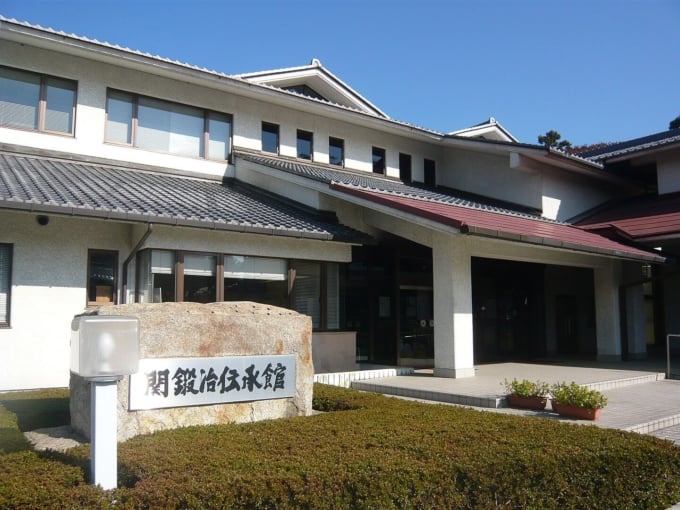
This facility showcases the traditional swordsmithing skills that represent Seki City. You can experience firsthand the swordsmithing techniques passed down since the Kamakura period.
On the first floor, you’ll find exhibits of Japanese swords, historical materials about swordsmithing, live demonstrations by swordsmiths and sword artisans, and video presentations. The second floor features displays of modern blades, collections by custom knife makers, and a quiz corner using computers. There’s also a forge and demonstration area, where major events like the "Hamono Matsuri (Blade Festival)" and the "Blade Memorial Ceremony" on Blade Day are held.
The Hamono Matsuri is held every year for two days on the Saturday and Sunday before "Health and Sports Day" in October. It takes place all over Seki City, including Kasuga Shrine and Honmachi Street. During the festival, the museum hosts live sword forging and polishing demonstrations, as well as a new sword exhibition, attracting nearly 200,000 visitors in recent years.
November 8 is designated as "Blade Day" by Seki City, based on the wordplay of 11 (ii) and 8 (ha, meaning blade). On this day, a memorial service is held at the Blade Mound on the museum grounds to honor worn-out blades.
This museum is open to the public year-round, where you can enjoy sword displays and feel the rich tradition of Seki City. It's highly recommended for international travelers too.
2. Get High-Quality Blades from Seki City! - Gifu Cutlery Hall
Another spot you should check out along with the Seki Traditional Swordsmith Museum is the Gifu Cutlery Hall. Just like the museum, this facility exhibits and sells Seki City’s fine blades. There’s also a video corner introducing tourist attractions within the city.
It’s located just a 4-minute walk from the museum, so visiting both is highly recommended. The first floor features a direct sales area for blades, a sharpening workshop, and a café. Numerous blades are displayed, while the second floor houses the Excellent Cutlery Exhibition and the Gifu Prefecture Cutlery Design Association, showcasing the latest technology in the blade industry.
The direct sales area on the first floor offers over 2,000 items, including kitchen knives, utility knives, replica swords, and carving tools. Since it’s a direct sale from the manufacturers, you can purchase high-quality blades at reasonable prices.
At the sharpening workshop, you can experience sharpening blades yourself. Paid sharpening services are also available, making it a popular hands-on activity. Please note that reservations are required for the sharpening experience.
Name: Gifu Cutlery Hall
Address: 4-6 Heiwa-dori, Seki City, Gifu Prefecture
Official Website: http://seki-japan.com/
3. Feel the Life’s Work of Enku at the Seki Enku Museum
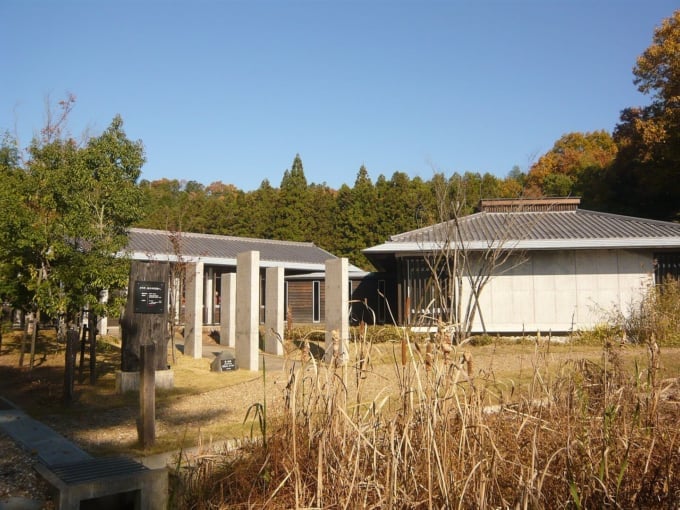
The Seki Enku Museum is dedicated to Enku, a Buddhist monk and sculptor from the early Edo period. The museum mainly displays Enku Buddhas, wooden Buddhist statues created by Enku.
Enku is known as a significant historical figure closely associated with Seki City. He was a mountain ascetic monk (shugenja) during the Edo period and spent his final years in Seki City. It is said that he carved 120,000 Buddha statues during his lifetime. Today, over 5,300 of his statues have been discovered, and his works, known as "Enku Buddhas," are recognized for their unique style.
Many of Enku's later works can be found throughout Gifu Prefecture, with more than 1,000 pieces discovered in the region alone. The Seki Enku Museum displays 30 of these statues.
The museum consists of two main buildings: the administration building and the exhibition building. The administration building hosts workshops about Enku, video introductions, and a library corner with books about Enku and the Mirokuji ruins, allowing visitors to deepen their knowledge of Enku.
Name: Seki Enku Museum
Address: 185 Ikejiri, Seki City, Gifu Prefecture
Official Website: http://www.city.seki.lg.jp/0000001466.html
4. The Shrine of the Blade God - Seki Kasuga Shrine
This shrine is dedicated to the guardian deity of swordsmiths, one of Gifu Prefecture’s traditional crafts. During the annual festival, a classical Noh performance called "Doji Yako" is dedicated on the Noh stage within the shrine grounds. Numerous Noh costumes are preserved as important cultural assets.
The collection includes 63 Noh costumes and 53 Noh masks, all designated as Important Cultural Properties of Japan. It is rare to find such a large collection of 16th-century Noh costumes and masks, making them valuable resources in the history of Japanese performing arts.
The shrine originated during the Kamakura period when swordsmiths migrated from Yamato Province and enshrined a divided spirit from Kasuga Taisha Shrine. Normally a quiet and peaceful place, it is specially opened to the public during the annual Blade Festival. In autumn, visitors can also enjoy the beautiful autumn foliage within the shrine grounds.
Nearby, you’ll find the Gifu Cutlery Hall and the Seki Traditional Swordsmith Museum, making it a great area to explore during the Blade Festival.
Name: Seki Kasuga Shrine
Address: 1 Minami Kasuga-cho, Seki City, Gifu Prefecture
Official Website: https://www.seki-kasuga.com/
5. Get Up Close with the Cormorant Fishing at Unoie Adachi — Enjoy Delicious Sweetfish Too!
After sightseeing, why not indulge in Seki City's gourmet delights? In Seki City, you can taste wild ayu (sweetfish) caught in the Nagara River. Cormorant fishing (ukai) is still practiced in Gifu Prefecture on the Nagara River, where you can watch skilled ukai fishermen and their birds at work.
Unoie Adachi offers an up-close experience of the cormorant fishing and a glimpse into the lives of the ukai masters and their cormorants. It is also a traditional inn specializing in wild ayu cuisine, where you can stay overnight. Treat yourself to a full-course meal of wild ayu and fully enjoy its unique flavor. The ukai master at Unoie Adachi is the 18th generation of cormorant fishermen certified by the Imperial Household Agency, offering a spectacular cormorant fishing experience.
Compared to the Nagara River ukai, the Seki ukai is less affected by city lights, allowing the boat’s lanterns to shine more beautifully. The boats also get much closer to the action, giving you a great view of the fishing. Ukai fishing is held from summer to autumn, so unfortunately, it cannot be viewed in the winter.
Name: Unoie Adachi
Address: 78 Oze, Seki City, Gifu Prefecture
Official Website: http://www.ccn2.aitai.ne.jp/~akane/
6. Perfect for Families – Furusato Farm Mino Seki
Furusato Farm Mino Seki is a large leisure farm spanning 60,000 tsubo (about 198,000 square meters). The farm grows a variety of fruits and vegetables like strawberries, blueberries, and tomatoes. It is also home to animals like rabbits, goats, and sheep, offering great interaction opportunities—perfect for families with children.
The facility is divided into several areas: the farm, a BBQ area, a park, and a store. The farm section allows visitors to harvest and buy seasonal produce all year round. On the third Sunday of each month, they hold a "Farm Festival" where seasonal ingredients are sold.
Seasonal fruit picking experiences are also available—strawberry picking from January to May, and blueberry picking in June, along with other activities. The farm also features a vegetable market, a food processing facility, and a hands-on food experience area where visitors can cook freshly harvested vegetables and learn about seasonal vegetable preparation and cooking. It’s also ideal for children’s food education, making it a fun learning experience for families.
Name: Furusato Farm Mino Seki
Address: 567-10 Osugi, Seki City, Gifu Prefecture
Official Website: http://minoseki.co.jp/
7. Stylish Japanese Modern Inn – Hidden Hot Spring Inn Yumoto Sugishima
After enjoying sightseeing and gourmet food, choosing a great place to stay is a must. A recommended accommodation is Hidden Hot Spring Inn Yumoto Sugishima. This inn was created by renovating a 150-year-old mansion of a wealthy farmer, offering a modern Japanese atmosphere.
The building features impressive, sturdy pillars and beams, creating a retro yet luxurious feel. Some rooms even have a traditional Japanese sunken hearth (irori), providing a warm and nostalgic atmosphere. The highest-grade room, the Dozo Room (earthen storehouse room), comes with a private open-air bath.
The hot spring has mildly alkaline simple spring water, known to help with stiff shoulders, joint pain, and atopic dermatitis. It’s also called “the beauty skin hot spring” because of its skin-enhancing effects. The large public bath has two tubs: the "lukewarm bath" directly flowing from the hot spring source and the "hot bath," which is simply heated, allowing you to enjoy the natural spring water.
There’s also a private open-air bath exclusively for guests, located beyond the bamboo grove. Here, you can soak in the hot spring while enjoying the changing seasons along the Itadori River.
Day-use bathing is also available, and with advance reservation, you can use the private open-air bath. Meals are made with seasonal ingredients: spring features mountain vegetable dishes, summer focuses on river fish like ayu (sweetfish), autumn offers mushroom dishes, and winter serves wild boar hot pot.
Name: Hidden Hot Spring Inn Yumoto Sugishima
Address: 4838 Itadori, Seki City, Gifu Prefecture
Official Website: http://www.sugishima.com/index.html
8. The Mysterious Tree Born from a Legend – Namashigi (The Nameless Tree)
Originally, this strange tree was unnamed, which led to it being called Namashigi (meaning "Nameless Tree").
There is a local legend about this tree. In the mid-Edo period, the area now known as Seki City suffered a severe drought. The commoners pleaded for tax reductions, but their appeals were repeatedly ignored. At that time, a village headman named Kinemon Otaki worked hard to help the starving peasants by directly negotiating with the magistrate. Unfortunately, his efforts were rejected, and eventually, Kinemon Otaki killed the magistrate.
As a result, Kinemon Otaki was sentenced to crucifixion. After his death, the villagers buried his body at the site where the Namashigi now stands. Interestingly, a rare tree sprouted from that spot. Since no one knew the tree’s name, it came to be called Namashigi.
It is also known as the sacred tree of Kinemon Otaki's spirit and is cherished by the local community.
Name: Namashigi (Nameless Tree)
Address: Nishihongo Namashigi, Seki City, Gifu Prefecture
Official Website: https://www.pref.gifu.lg.jp/page/4963.html
9. Refresh Yourself in Nature and Improve Your Skin at “Itadorigawa Onsen Badehaus”
Located along the Itadori River, this day-use hot spring lets you relax in the middle of nature. The peaceful surroundings and the open-air bath provide a sense of tranquility and openness.
The hot spring is known for its high-quality water. Simply soaking in it leaves your skin smooth and silky. The water is mildly alkaline and is said to be effective for ailments like neuralgia, muscle pain, joint pain, cold sensitivity, fatigue recovery, and overall health promotion.
It is often compared to Gero Onsen, one of Gifu’s famous hot springs, but with an even more slippery and moisturizing feel. Inside the facility, you can also enjoy a meal at “Kabuzantei” after your bath, where they serve handmade soba noodles and wild vegetable dishes using local ingredients.
Name: Itadorigawa Onsen Badehaus
Address: 4175-9 Itadori, Seki City, Gifu Prefecture
Official Website: https://www.itadorigawa-onsen.com/
10. Enjoy Delicious Ayu Fish and River Activities at “Itadorigawa Horado Kanko Yana”
This is the only "Yana" fishing site left along the Itadori River. "Yana" is a traditional fishing method used to catch ayu (sweetfish) that swim downstream. Artificial small waterfalls are created in the river to catch the fish as they pass through.
The success of Yana fishing depends greatly on the river’s condition—sometimes yielding a big catch, other times the structure may get washed away. In the past, people would stand on the Yana to catch fish directly.
Today, the Horado Kanko Yana has been turned into a leisure facility open to the public, starting every year from August 1. You can even stand on the Yana and try catching the fish yourself.
Inside the facility, you can enjoy premium ayu fish caught from the clear Itadori River, freshly grilled by yourself for the best taste.
Name: Itadorigawa Horado Kanko Yana
Address: 1712 Osaka, Horado, Seki City, Gifu Prefecture
Official Website: https://horado-yana.com/index.php
11. A Stunning Cherry Blossom Tunnel at “Teraogahara Senbonzakura Park”
Cherry blossoms in Gifu bloom from early to mid-April. A must-visit during spring is Teraogahara Senbonzakura Park, home to a massive cherry blossom tunnel stretching about 2 km along Gifu Route 59, from Terao Pass to Terao district.
With around 2,000 cherry trees, the area becomes vibrant with lanterns and food stalls during peak season. It’s also selected as one of the "Hida-Mino 33 Best Cherry Blossom Spots." At night, the trees are beautifully illuminated, creating a magical atmosphere.
Name: Teraogahara Senbonzakura Park
Address: Terao, Taniguchi, Mugegawa-cho, Seki City, Gifu Prefecture
Official Website: https://www.kankou-gifu.jp/spot/detail_1181.html
12. A Place Associated with Oda Nobunaga: “Muge Hachiman Shrine”
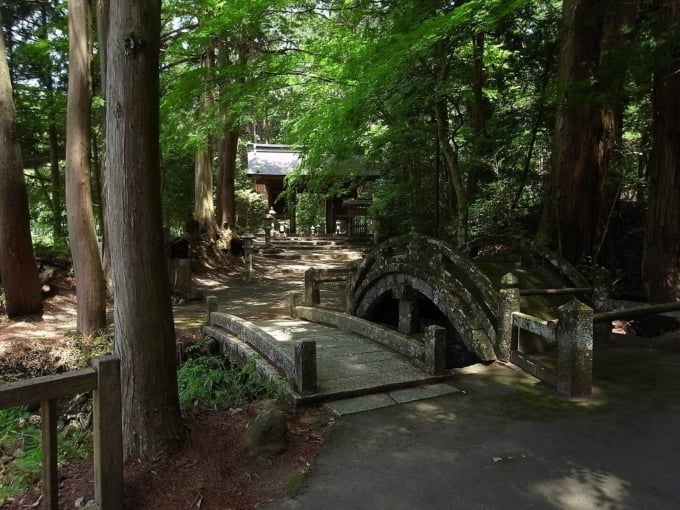
Muge Hachiman Shrine is located in the unlucky direction (“Kimon”) from Gifu Castle, built by Oda Nobunaga. It is said Nobunaga and his lineage up to Nobutaka revered this shrine to protect the castle from evil spirits.
Within the shrine grounds stands the “Shitaba-hyo,” an important cultural property of Gifu Prefecture, established by Nobunaga himself.
Every mid-April, the annual “Hanauma Festival” is held, where four horses adorned with cherry blossom decorations made of washi paper and bamboo rush into the shrine’s grounds. People compete to grab the flowers off the horses' backs.
Taking home the flowers and placing them on your rooftop is believed to protect your house from lightning and bring good fortune. The festival originally used floats and portable shrines but switched to horses during the Edo period.
Name: Muge Hachiman Shrine
Address: Hachiman, Mugegawa-cho, Seki City, Gifu Prefecture
Official Website: https://sekikanko.jp/spot_post/362
13. Take a Break in a Historical Checkpoint Setting: "Noshusekisho Chaya"
Noshusekisho Chaya is a rest stop designed with the motif of the historic checkpoint that gave Seki City its name. At the entrance, there is a 4-meter-high "Kabukimon" gate without a roof. Once you pass through it, you’ll see a building resembling an old checkpoint.
Inside, you’ll find a large screen displaying Seki City’s tourist information and a specialty shop selling local products. The facility also features an event space where you can experience carving "Enku Buddha" statues or making your own traditional uchiwa fans.
The local restaurant "Fuigo" offers morning sets such as the "Chaya Set" and the "Cake Set" for 500 yen each (as of November 2016).
For lunch, they serve "Gibier" (wild game cuisine) like wild boar and deer, "Keichan" made with Oku-Mino chicken, and "Enku Taroimo Tororo Steak" made with local taro. All lunch sets include a seasonal side dish, rice, and soup, with free rice refills. Prices are 1,200 yen for "Inoshika-chan", and 1,000 yen each for "Keichan" and "Taroimo Tororo Steak" (all prices include tax as of November 2016).
Noshusekisho Chaya is adjacent to the Seki Cutlery Tradition Museum, making it a great place to relax after your visit.
Name: Noshusekisho Chaya
Address: 9-1 Minamikasuga-cho, Seki City, Gifu Prefecture
Official/Related Website: https://www.city.seki.lg.jp/kanko/0000001544.html
14. Relax in an Open-Air Bath with a Stunning View: "Kaminokami Onsen Hohoemi no Yu"
Reopened on April 7, 2022, "Kaminokami Onsen Hohoemi no Yu" is located on a hilltop, offering views of the Tsubo River and surrounding rural landscape. It boasts spacious open-air baths and a beautifully maintained Japanese garden. The natural hot spring water is free-flowing without dilution, and the wooden indoor baths include tubs made from Koya Maki. The baths are gender-rotated.
There’s also a jet bath for ultimate relaxation. The high-quality, slightly alkaline hot spring leaves your skin smooth and has beauty benefits. The clear water is mildly warm, allowing for a comfortable long soak. It’s known to help with neuralgia, muscle pain, and cold sensitivity.
The low wooden fences around the open-air bath complement the hilltop view, making the scenery enjoyable. Each season offers a different atmosphere, so it’s worth visiting anytime.
The restaurant serves local specialties like refreshing "Yuzu-flavored Fried Chicken" and "Seki Ayu Donburi." Yuzu juice and Yuzu jelly made from local produce are also popular souvenirs.
Name: Kaminokami Onsen Hohoemi no Yu
Address: 477 Kaminokami, Seki City, Gifu Prefecture
Official/Related Website: https://hohoemi.ma-go.co.jp/
15. Perfect for Souvenirs Along the Itadori River: "Michi-no-Eki Lusten Horado"
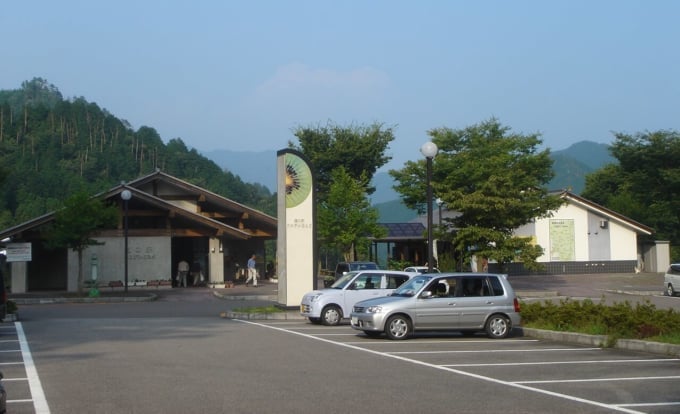
"Lusten" is a German word meaning "rest" or "a peaceful place surrounded by nature."
Horado is famous for kiwi fruits, which is also the design of the roadside station’s monument. Nearby are several sightseeing spots along the Itadori River, like Monet’s Pond, making it a great base for exploration. The souvenir shop sells local specialties like "Kiwi Senbei" (kiwi rice crackers), "Kiwi Wine," and "Horado Miso" made in the Horado area.
They also offer kiwi sherbet, perfect for a refreshing break. You’ll also find goldfish, beetles, handmade soaps, and baskets for sale.
The information center has an 80-inch screen displaying tourism materials and real-time traffic and sightseeing updates. In December, about 20,000 LED lights illuminate the area, creating a beautiful winter display.
Name: Michi-no-Eki Lusten Horado
Address: 545 Horado Sugaya, Seki City, Gifu Prefecture
Official/Related Website: https://www.kankou-gifu.jp/spot/detail_1183.html
◎ Summary of Seki City, Gifu - Land of Cutlery and Cormorant Fishing
This time, we introduced 15 sightseeing spots in Seki City, Gifu, where you can experience beautiful traditions and local cuisine. We hope you’ll immerse yourself in Japan’s traditional culture that we often forget in our daily lives.
Why not enjoy a unique trip to Seki City—savoring wild-caught Ayu fish, witnessing traditional swordsmith techniques, and relaxing in natural hot springs?
RELATED ARTICLES
REGIONS
CATEGORIES
FEATURED ON Gifu
-
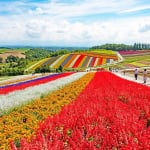
Where will you go for the summer vacation? Introducing recommended spots for domestic travel
-
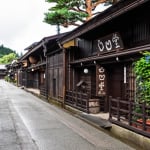
5 Popular Date Spots in Gifu Prefecture – Outing Destinations Couples Can Enjoy Together
-
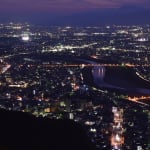
Top Night View Spots in Gifu Prefecture – Among the Best in the Tokai Region
-
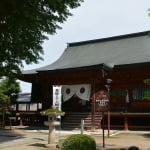
Hida Kokubunji Temple is a Power Spot in Hida-Takayama, Gifu Prefecture | Highlights and History
-
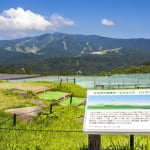
Surround Yourself with Relaxing Nature Close to You! 6 Recommended Tourist Spots in Hirugano Highlands
MOST POPULAR ON Gifu
-
 1
1Doha: Must-see Attractions in the Capital of Qatar
-
 2
2Toronto: 10 Things to do in this Picturesque Canadian City
-
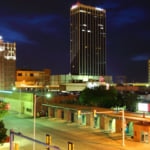 3
3Amarillo: A City Famous for It’s Amazing Canyons, Great History and Music
-
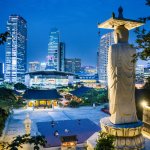 4
4South Korea: Dazzling Scenery, Rich Culture and Fascinating History
-
 5
5Kuwait: A Country in Middle East Asia Famous for Hot Sand Dunes and Stunning Cityscape

